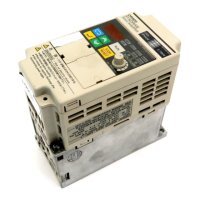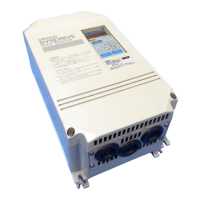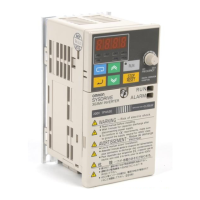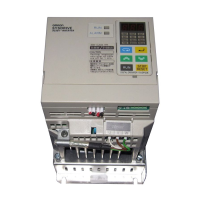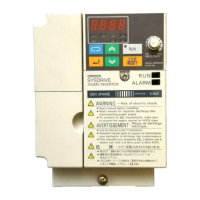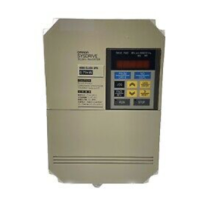4-3
4-1 Procedure
1. Installation and Mounting
Install
the Inverter according to the installation conditions. Refer to page
2-2. Ensure that the instal
-
lation conditions are met.
2. Wiring and Connection
Connect
to
the power supply and peripheral devices. Refer to page
2-1
1. Select peripheral devices
which meet the specifications and wire correctly.
3. Power Connection
Carrying out the following pre-connection checks before turning on the power supply:
Always
ensure that a power supply of the correct voltage is used and that the power input
terminal
(L1, L2, L3) is wired correctly.
200-V class: 3-phase 200 to 230 VDC, 50/60 Hz
400-V class: 3-phase 380 to 460 VDC, 50/60 Hz
Make sure that the Motor output terminal (T1, T2, T3) and the Motor are connected correctly.
Ensure
that the control circuit
terminals and the control device are wired correctly
. Make sure that
all control terminals are turned OFF.
When using a PG Speed Control Card, ensure that it is wired correctly.
Set the motor to no-load status, (not connected to the mechanical system).
Having conducted the above checks, connect the power supply.
4. Check the Display Status
Check to be sure that there are no faults in the Inverter.
If the display at the time the power is connected is normal, it will read as follows:
Data Display: Frequency Ref
When
an fault has occurred, the details of the fault will be displayed.
In that case, refer to
Section
8
Maintenance Operations
.
5. Initializing Parameters
Initialize the parameters.
6. Setting the Input Voltage
Set
the Inverter input voltage (E1-01) to the correct voltage. (At the same time, set the short pin for
the 400-V class models of 18.5 KW or larger.)
7. Auto-tuning
Execute auto-tuning in the open-loop vector control mode.
When auto-tuning is executed, motor parameters are set automatically.
When this is not possible using auto-tuning, switch to V/f control mode and set the V/f pattern.
8. No-load Operation
Start the no-load motor using the Digital Operator.
Set
the frequency reference using the Digital Operator and start
the motor using key sequences.
9. Actual Load Operation
Connect the mechanical system and operate using the Digital Operator.
When
there
are no dif
ficulties using the no-load operation, connect the mechanical system to the
motor and operate using the Digital Operator.
Trial Operation Chapter
4
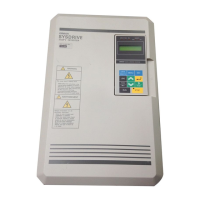
